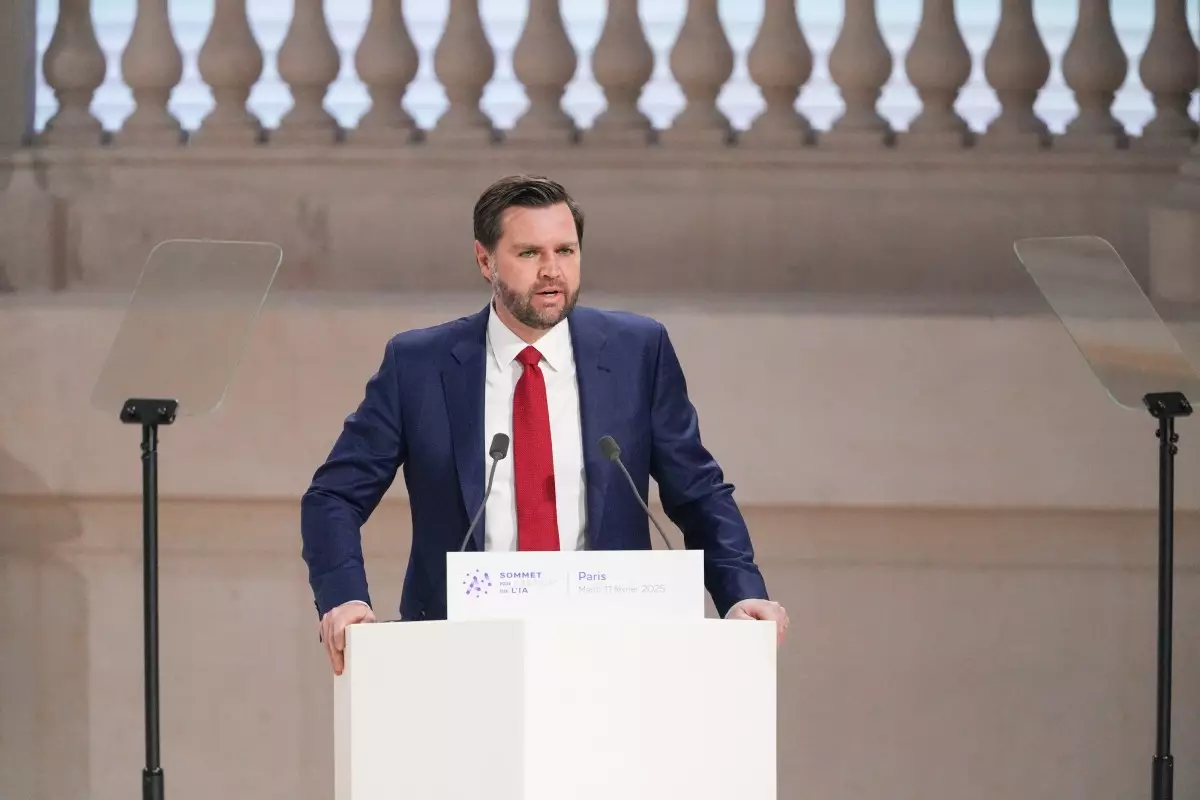The recent AI Action Summit in Paris highlighted a pivotal moment in the global discourse surrounding artificial intelligence, as nations grapple with the regulatory frameworks necessary to harness its capabilities. Notably, the U.S. chose not to endorse the conference’s joint statement, symbolizing a more unilateral approach to AI policy. Vice President J.D. Vance’s address reflected a broader ideological shift — from a focus on AI safety to one that emphasizes opportunity and potential, revealing stark contrasts in the way the U.S. envisions its role on the world stage.
Vice President Vance’s remarks presented a robust defense of American innovation, suggesting that the U.S. is committed to maintaining its status as a leader in AI technology. He emphasized that the future of American AI lies in encouraging growth rather than succumbing to excessive regulation. “The U.S. will not be hampered by regulatory frameworks that stifle innovation,” he asserted. This reflection raises questions about the balance between beneficial technological advances and the inherent risks associated with their deployment.
Vance’s clear dismissal of AI safety measures indicates a paradigm where the urgency to capitalize on AI’s potential overshadows the necessity for caution. He drew attention to a vision where AI serves as a catalyst for job creation and economic growth, presenting a model that prioritizes deregulation as a means to propel industry forward. This perspective, however, overlooks the critical conversations surrounding ethical considerations and broader societal impacts that must accompany innovation.
In an unexpected pivot, Vance extended an invitation to other nations to collaborate with the U.S. in shaping their AI initiatives. He advocated for an international framework that aligns with U.S. values, yet this stance is not without its challenges. Ignoring existing models like the EU’s AI regulations may alienate allies who prioritize safety and ethical standards in technology deployment.
The conference spotlighted competing visions of AI governance. While the U.S. seeks to foster a business-friendly environment, European officials, including EU President Ursula von der Leyen, argued for unified safety standards that prioritize public trust. The dissonance between these approaches reveals the complexities of global cooperation in a rapidly evolving technological landscape.
Vance’s skepticism towards regulation raises pertinent questions about the implications of a deregulated AI environment. Although he asserts that stringent oversight could inhibit innovation, this assertion may dangerously underestimate the potential for AI misuse. The rapid integration of AI into society can lead to unintended consequences, particularly in areas of bias, misinformation, and labor displacement.
By de-emphasizing these elements, the U.S. stance poses significant risks, especially as tech giants assert their influence within the market. As industry leaders push for minimal regulation to benefit their interests, smaller firms may struggle to compete in a lopsided playing field. Without safeguards in place, the promise of AI could easily morph into scenarios of monopolistic control and societal inequality.
Vance’s rhetoric around AI opportunity contrasts sharply with the concept of AI safety, suggesting a troubling dichotomy. The suggestion that safety considerations detract from pursuing industrial advancements is misaligned with the realities of technological development, where the two can, and must, coexist. It’s essential to recognize that responsible innovation incorporates safety measures to build trust and mitigate risks.
A balanced approach would seek to unify the need for innovation with the imperative of accountability. As exemplified by Vance’s remarks about labor impacts, the failure to address how AI will reshape job markets risks exacerbating economic divides. It is critical for policymakers to engage in nuanced discussions that incorporate varied perspectives on technological advancement and worker welfare.
As the AI Action Summit concluded, the divergence in regulatory philosophies underscored the necessity for ongoing dialogue about the future of AI. While the U.S. champions a model that prioritizes rapid onboarding of technology, there are undeniable benefits in considering frameworks that account for ethical implications and public safety.
To navigate the future of AI effectively, it is vital for stakeholders to foster an inclusive conversation focused on shared goals—advancing innovation while safeguarding the communities impacted by technological change. The challenge lies not merely in choosing between regulation and innovation, but in crafting a collaborative and responsible approach that embraces both for the greater good. As we move forward, the potential for AI can only be realized when its deployment is conducted with foresight and integrity.

